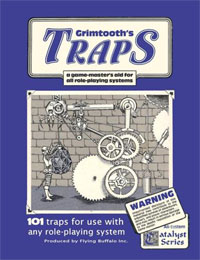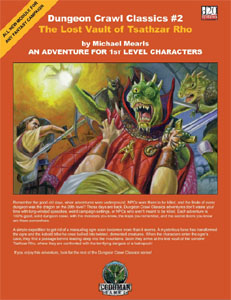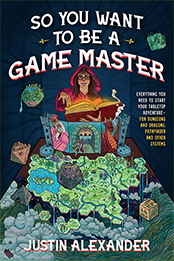 I’ve spent the past our or so browsing through Traps & Treachery, Grimtooth’s Traps, and the Book of Challenges for inspiration in designing a trap-laden dungeon of doom.
I’ve spent the past our or so browsing through Traps & Treachery, Grimtooth’s Traps, and the Book of Challenges for inspiration in designing a trap-laden dungeon of doom.
While reading the last of these, a supplement published by WotC during the early days of 3rd Edition, I was struck by the following piece of advice for the neophyte DM:
Make Them Dig Deep: In a lair of cold creatures, only the sorcerers will be able to muster enough fire spells to win. Using many of the same type of creatures drains a subset of the party’s resources while never tapping into another subset. The heroes need to ration resources, and that benefits those on the receiving end of the PCs’ wrath.
This advice is not given as a “one true way” of doing things. It’s instead offered on a platter of several different ways of mixing things up and structuring encounters and adventures in way that makes things just a little bit tougher for the PCs than they would normally be.
But if you’re ever looking for a concrete example of the difference between the design ethos of 3rd Edition and the design ethos of 4th Edition, that quote isn’t a bad place to start. Because any 4th Edition designer would consider that quote to be anathema: It violates two of the core principles of 4th Edition gaming (“all characters should participate in all encounters” and “strategic resource management is bad”).
A couple of days ago I mentioned in the comments that, in my opinion, “the narrow range of options that results from this design ethos is bland and boring”. It was particularly because that comment was fresh in my mind that this quote jumped out at me while I was reading. It’s a perfect example of the type of gameplay that was unceremoniously stripped out of 4th Edition.













